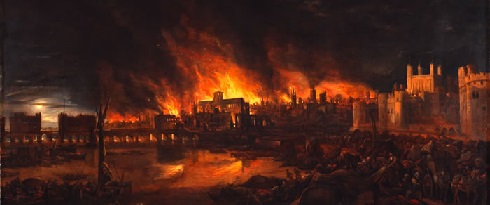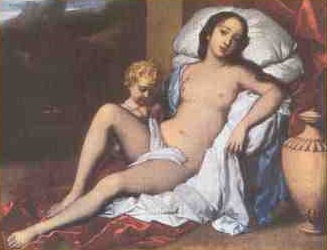
Restoration and Revolution

Introduction
In April 1660, Parliament asked Charles II, the son of Charles I, to return to England from exile to become king. This is called the Restoration.
Charles II
 The first years of Charles ll's reign were years of disaster.
The first years of Charles ll's reign were years of disaster.
In 1665 the plague killed a fifth of the population of London.
In 1666 the Great Fire of London (left) destroyed the city.

After the hated 'rule of the saints', Charles's reign was a time of fun and naughty behaviour. The theatres became very popular – the actress Nell Gwyn right) was Charles ll's mistress.
But it was also a time when science, writing and art flourished.
Like his father, Charles II did not like ruling with a Parliament. In 1670, he secretly promised King Louis XIV of France that he would make England a Roman Catholic country.
Parliament was loyal to Charles, but it was determined that England should stay Protestant. In 1678, a trickster called Titus Oates published the names of 102 Catholics who, he said, were plotting to massacre the Protestants. Although it was all complete nonsense, the 'Popish Plot' caused panic in London. Protestants carried clubs in case a Catholic tried to murder them. A dozen Catholics were executed.
Charles's brother, James, the heir to the throne, was a Roman Catholic. Some people tried to force Charles to promise that James would never succeed to the throne. They were nicknamed `Whigs', after some Scottish rebels. People who supported Charles and James were nicknamed 'Tories', after some Catholic bandits who hid in the bogs of Ireland. The Whigs and the Tories were the first political parties in England.
James II
After 1681, the excitement of the Popish Plot died down. When Charles died in 1685, James II succeeded to the throne. James was openly Roman Catholic. He allowed Roman Catholics to worship freely. Judges who disagreed with him were thrown into prison. James began to build up a permanent (`standing') army.
People were alarmed, but they knew that James would die soon, and they thought that he would be succeeded by his daughter Mary, a Protestant.
The Glorious Revolution
In 1688, however, James's wife gave birth to a boy. English Protestants were horrified. A group of seven leading politicians invited William of Orange – Mary's husband and leader of the Dutch army – to come to England to be king.
William arrived in England in November 1688. Only a few English people supported James; they were called Jacobites (the Latin word for James is Jacobus). James fled to France.
William had not inherited the throne. He had been given the crown by Parliament. In return, William and Mary agreed to the Bill of Rights (1689). They promised to obey the law and to call frequent Parliaments. They promised not to keep a standing army, and gave Parliament the right to appoint the judges. Parliament also made sure that it controlled William's money. It gave him a small annual payment called the 'civil list', to support his household. If William wanted any more money, he had to go to Parliament to ask for it. This kind of 'rule with limits' is called 'constitutional monarchy'.
In 1701, the Act of Settlement was passed, stating that a Catholic could never be king or queen of England. When Queen Anne died in 1714, the throne passed to a German – George of Hanover. The English people had decided that they wanted a 'constitutional monarchy'.
After you have studied this webpage, answer the question sheet by clicking on the 'Time to Work' icon at the top of the page.
Links:
The following websites will help you research further:
England after 1649:
• the BBC webpages on
Charles II,
James II and William of Orange
• BBC website on the Glorious Revolution
• History Learning site on the Glorious Revolution